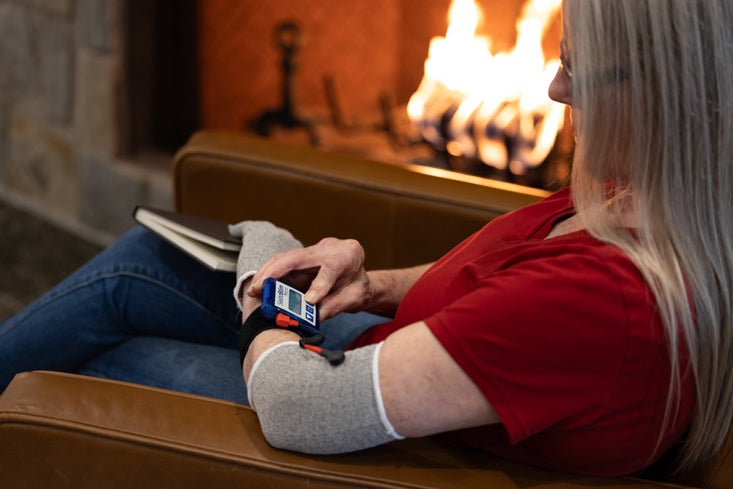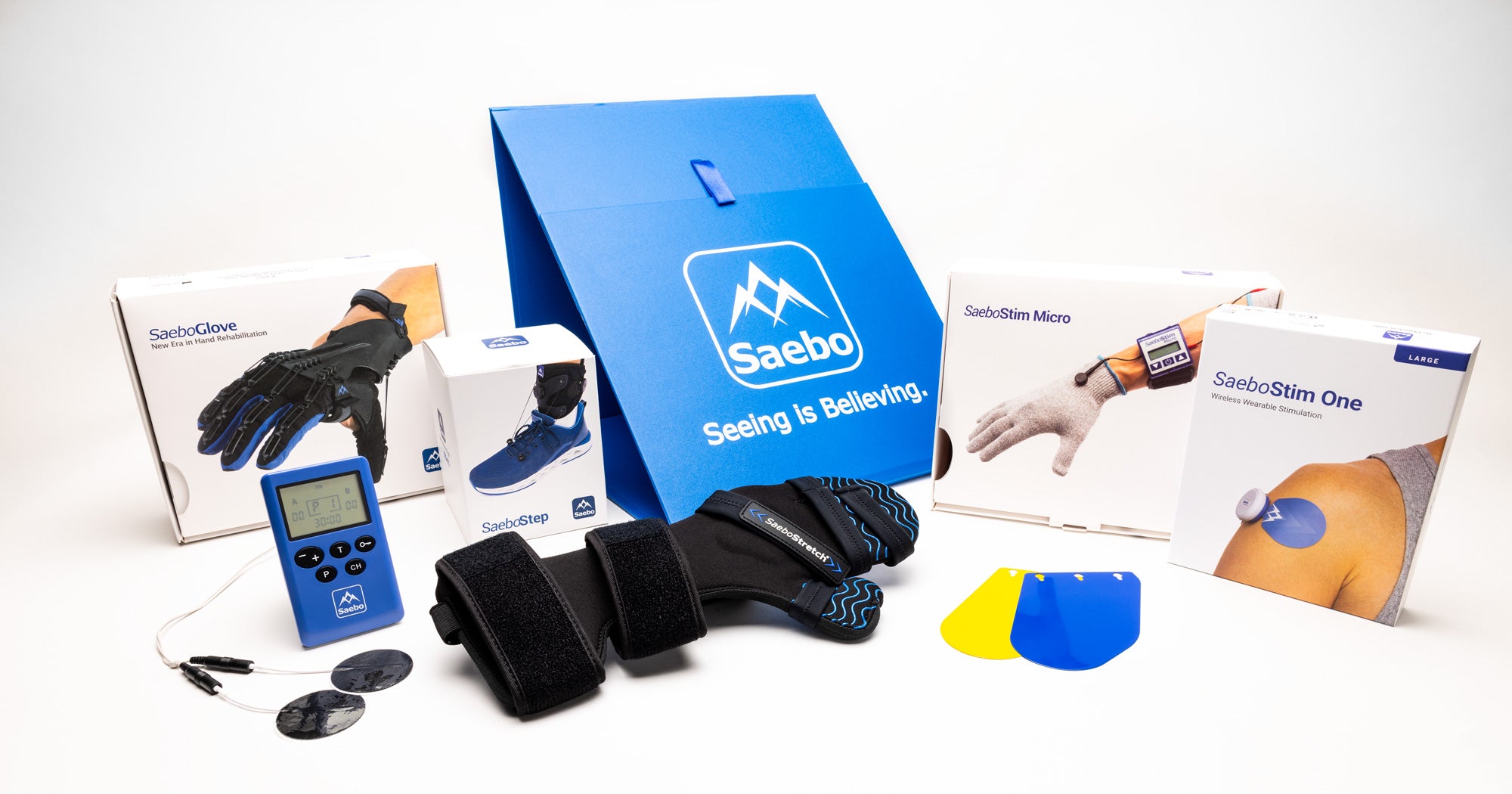
13 Common Mistakes to Avoid During Stroke Recovery
Worldwide, stroke accounts for 6.2 million deaths a year and is the leading cause of disability. Fortunately, there are things that you can do after a stroke to improve your chances of recovery and reduce the risk of having another. Start by avoiding the following stroke recovery mistakes.
Mistake #1: Neglecting To Set Recovery Goals
Setting simple, realistic goals can dramatically boost your stroke recovery. Research has found that patients who participate in active goal setting with their therapist are more satisfied with their rehabilitation process. Start by setting goals that are meaningful to you. Your goals can range from things that you want to achieve over the short term to longer-term accomplishments. Talk to your therapist about setting goals and establishing a realistic time frame in which to accomplish them. Look to your family, friends and stroke recovery team for encouragement to help you stay on track.
Mistake #2: Losing Hope
Many stroke patients and caretakers feel depressed, angry or anxious after a stroke. Fortunately, rehabilitation can help you or a loved one get back to normal life as soon as possible. It is important to remember that every stroke survivor's recovery is different. There are always things, however, that can be done to encourage faster recovery. Take an active approach and work with a rehabilitation team to overcome challenges to stroke recovery goals. There are also many local stroke support groups where you can share common interests with others and help decrease feelings of anxiety or hopelessness.
Mistake #3: Not Staying Motivated
It can be challenging to stay motivated during stroke recovery. Apathy occurs in up to 40 percent of stroke patients and is linked to worse rehabilitation outcomes. One useful way to reduce apathy and stay motivated is to have a good stroke regimen. Focus on a reason for your recovery and associate it with a plan of action. Incorporate sentimental items into your daily routines. If one of your regular habits is to write a list of your tasks for the day, try writing your list on the back of a card that has a motivational quote or phrase important to you.
Mistake #4: Forgetting to Practice Consistently
Repetition is key to successful long-term learning and retention. Repetition helps re-establish communication between the damaged parts of the brain and the body. There are a variety of stroke exercises that help you improve functioning more quickly after a stroke:
- Core exercises can help if you have lost core strength on one side.
- Balance exercises help improve stability.
- Leg exercises can encourage mobility.
- Arm exercises can restore function to your arms, making it easier to grip and releasing objects easier.
- Hand dexterity exercises improve hand strength and fine motor function.
- Shoulder exercises can help you recover arm and shoulder function after a stroke.
Always remember that for exercise to be successful in achieving its goals, consistent practice is necessary.
Mistake #5: Losing Momentum During a Recovery Plateau Stage
At the beginning of stroke recovery, significant improvements are common. When progression slows down or stops during a recovery plateau stage, it can be tough to maintain the necessary momentum to pursue your goals. A recovery plateau is a part of stroke recovery for many survivors. During that phase, a survivor may feel as though they have reached the end of their possible progress and cannot expect any further improvement. That is not necessarily the case. Research shows that significant stroke progress can still be made outside of the initial recovery period. Therefore, it is essential to continue to stay motivated and work towards improvement. Utilizing your support system can help motivate you in this regard.

Mistake #6: Not Counteracting Learned Non-Use
After a stroke, it is common to try to compensate for a weak arm or leg by relying on the stronger arm or leg. However, this can lead to learned non-use, which occurs when limbs that have been weakened by stroke are not used. Learned non-use leads to atrophy, the wasting away of a muscle from cell degeneration. To maintain and improve functionality in the weak arm or leg, you must make attempts every day to move the affected limb. One way to do this is to use Constraint-Induced Movement Therapy (CIMT), a therapy that prevents stronger limbs from moving, forcing the use of the weaker arm or leg instead. Before starting a CIMT program, discuss it with your doctor or therapist to make sure that it’s right for you.
Mistake #7: Not Getting Enough Sleep
Getting enough sleep during stroke recovery is vital. Constraint-Induced Movement Therapy, an integral part of stroke recovery. Neuroplasticity helps organize and structure damaged brain circuits after a stroke, which improves memory and learning. Unfortunately, sleep problems are common after a stroke. If you have difficulty sleeping, there are a variety of interventions that might be able to help, such as structuring or restructuring a bedtime routine. It is best to talk to your physician or recovery team about any sleep issues. They can identify specific medical problems that might be impacting sleep and talk with you about which interventions would be best for you.
Mistake #8: Keeping Stress and Inflammation High
Chronic stress after a stroke can impede the recovery process by flooding the body with a hormone called cortisol. Cortisol can cause the body's pH levels to become imbalanced, resulting in a high level of acidity and an increase in harmful bacteria. This process weakens the immune system, making it harder to recover from illness. To boost the immune system, try consuming natural probiotics (found in foods like yogurt), which promotes good bacteria in your body.
Inflammation is also problematic for stroke recovery. Inflammation has been found to increase brain injury and contribute to the expansion of ischemic lesions after a stroke. Chronic stress leads to inflammation in the body. Reduce stress during recovery by practicing stress management exercises like deep breathing, Tai Chi, meditation or yoga.

Mistake #9: Ignoring the Importance of Good Nutrition
After a stroke, it can be difficult to get all of your necessary nutrients, but healthy nutrition can reduce the risk of having another stroke. A healthy diet helps reduce several risk factors for stroke — blood pressure, cholesterol levels, and weight. Therefore, it is necessary to focus on eating nutritional, healthy foods and taking supplements to help maintain your health. Not sure what to eat after a stroke? Here is a guide to nutrition after stroke.
Mistake #10: Going Overboard with Exercise
Exercise is crucial for stroke recovery. The right amount and intensity of exercise can help you recover more quickly and lower the risk of another stroke. There is definitely such a thing as too much exercise, however. Research indicates that excessive and intense activity can increase the risk of both heart attack and stroke. Proper rest between workout or rehab sessions is essential.
Mistake #11: Not Thinking About Prevention
Stroke survivors are at high risk for a second stroke or other serious medical problems for at least five years after their first stroke. Therefore, stroke prevention is vital. There are a variety of things that can be done to help prevent another stroke, including:
- Managing medications
- Focusing on nutrition
- Limiting alcoholic beverages
- Exercising regularly
- Quitting smoking
- Lowering blood pressure
- Working with rehab team to reduce any other risk factors
Focusing on the above things can help you reduce the likelihood of suffering another stroke.
Mistake #12: Not Working Through Communication Problems
After a stroke, many people experience aphasia. Receptive aphasia is a condition that makes it difficult to understand spoken and written language. Expressive aphasia makes it difficult to think of or verbalize the correct word. If you have expressive aphasia, take a deep breath and try to relax before communicating with someone. This will allow you to focus on what you want to say. Work with your speech-language therapist to develop tools to help to make communication manageable, such as a book of words or symbols. These can help you get your point across to others. You could also try wearing a medical alert bracelet that indicates that you have aphasia.If you are communicating with someone who has receptive aphasia, try to be patient and avoid using long, complex sentences.
Mistake #13: Ignoring PTSD After Stroke
According to research conducted by Columbia University Medical Center researchers, approximately one out of every four stroke victims have post-traumatic stress disorder (PTSD). PTSD can occur after any traumatic event that threatens life, such as a terrorist act, natural disaster or medical condition. People that have PTSD have disturbing, intense thoughts and feelings related to their experience that persist after the traumatic event has ended. The person may feel chronic fear, sadness or anger. They might also feel withdrawn or detached from other people. It is crucial for anyone with PTSD to be evaluated by a physician or mental health professional so they can be supported through the disorder.
Helping Stroke Survivors Help Themselves
Stroke recovery can be a long process and no two people recover from a stroke in the exact same way. Regaining full physical and cognitive function after stroke takes hard work and dedication. Just remember that there are plenty of approaches that you can take to recover from a stroke. Everyone is different, so find the path that works best for you. Here at Saebo, we are committed to stroke support and recovery for all survivors and their families. Saebo offers a wide range of products that combine cutting-edge technology with evidence-based rehabilitation techniques. Our offerings and network of Saebo-trained therapists can help you or a loved one to obtain all the necessary tools to maximize stroke recovery.
All content provided on this blog is for informational purposes only and is not intended to be a substitute for professional medical advice, diagnosis, or treatment. Always seek the advice of your physician or other qualified health providers with any questions you may have regarding a medical condition. If you think you may have a medical emergency, call your doctor or 911 immediately. Reliance on any information provided by the Saebo website is solely at your own risk.




